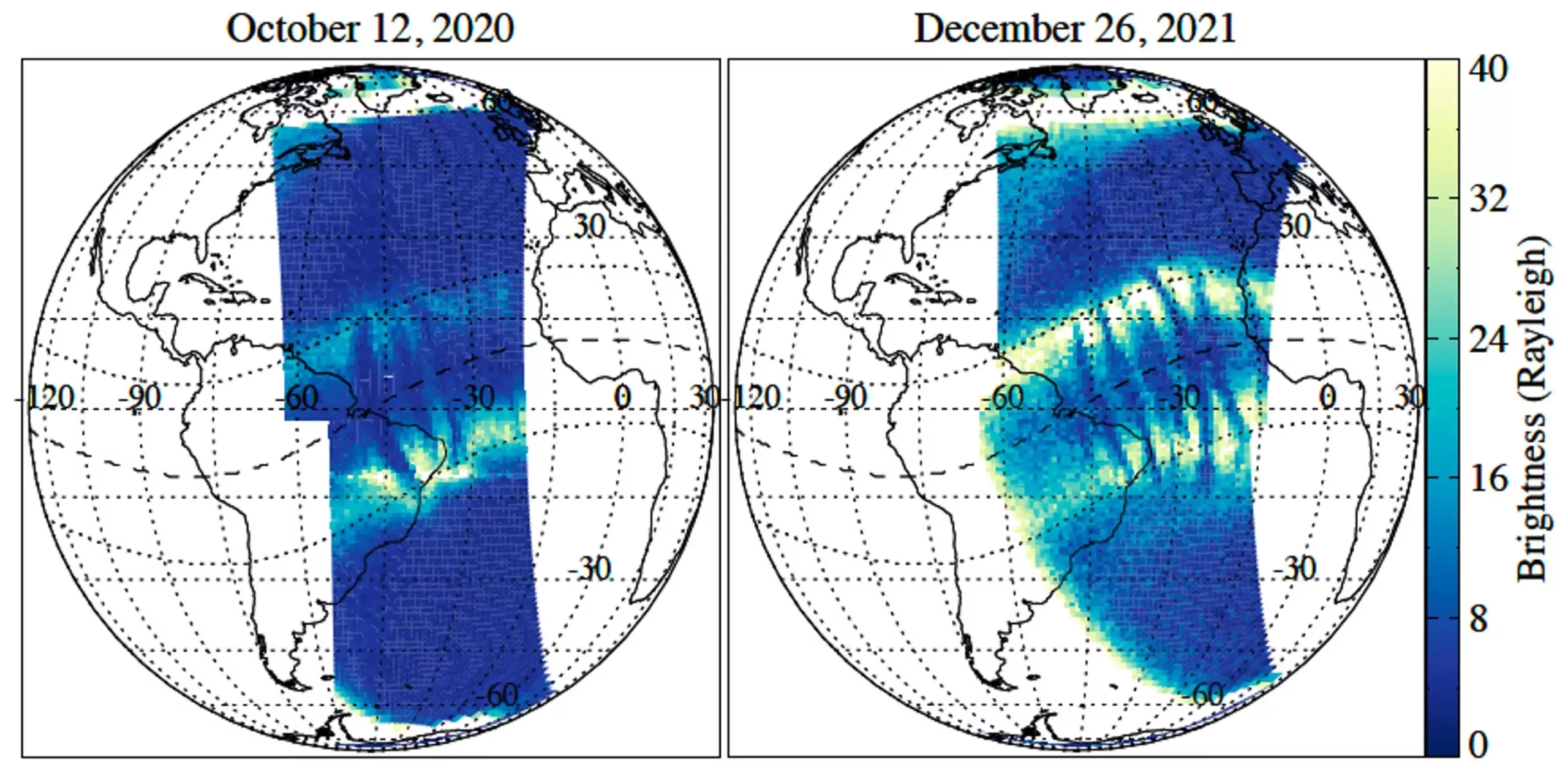The ionosphere, Earth’s upper atmosphere, exudes an enigmatic quality akin to an uncharted creative landscape. NASA’s groundbreaking Global-scale Observations of the Limb and Disk (GOLD) mission has illuminated this intricate region, revealing an intriguing phenomenon: distinct C-shaped and X-shaped formations within the electrified layers of ionized gas. These shapes, reminiscent of letters, have emerged in unexpected patterns and settings, inviting a deeper inquiry into their origins, formation, and implications for our communication systems that rely on these atmospheric layers.
Understanding the Ionosphere’s Role
Spanning an altitude of approximately 50 to 400 miles above our surface, the ionosphere serves as a vital playground for charged particles. During daylight, solar energy bombards the Earth, energizing atoms and molecules, effectively turning this zone into a vibrant soup of plasma. This charged state facilitates the propagation of radio signals across vast distances, playing an indispensable role in global communication and navigation strategies. However, as night approaches and solar energy wanes, the ionosphere’s dynamics shift, giving way to the formation of low-density “bubbles” that can severely disrupt communication signals.
The significance of monitoring the ionosphere cannot be overstated. The disruptive potential of these charged formations, especially during geomagnetic storms or volcanic eruptions, can result in communication blackouts if not understood and fortified against. But what happens in periods of relative calm? The GOLD mission has recently shed light on this, unveiling unusual X-shaped plasma formations even in the absence of significant disturbances.
Unexpected Discoveries during Quiet Time
Previously, scientists only encountered instances of merging crests under disturbed geomagnetic conditions. However, the GOLD mission has made waves by detecting X-shaped formations during “quiet times,” raising crucial questions about the underlying mechanisms influencing the ionosphere. Fazlul Laskar, a prominent researcher in this field, emphasizes that this revelation suggests the existence of localized factors affecting the ionosphere’s shape and behavior during such periods.
Computer models theorize that these X formations could be linked to atmospheric dynamics pulling plasma downward. The realization that these patterns emerge despite tranquil conditions implies that our understanding of the ionosphere’s interactions with the lower atmosphere is still incomplete. Jeffrey Klenzing, from NASA’s Goddard Space Flight Center, posits that localized lower atmospheric activity may be the unseen force reshaping the ionosphere during otherwise calm periods.
The Significance of C-Shaped Bubbles
In addition to X shapes, GOLD has observed surprising C-shaped plasma bubbles that further complicate the narrative surrounding the ionosphere’s behavior. Traditionally, plasma bubbles align in elongated patterns along magnetic field lines. Yet, the emergence of C-shaped and reverse-C-shaped bubbles reveals new layers of complexity. Scientists speculate that growing terrestrial winds play a significant role in molding these shapes, likening it to a tree bending in the direction of consistent winds.
This notion of wind dynamics suggests a fascinating interplay between atmospheric conditions and plasma formation. LASP scientist Deepak Karan and his team have mapped the presence of these distinct bubbles in alarming proximity—just about 400 miles apart—raising even more questions regarding atmospheric activity. Such close pairings had eluded previous observations, indicating an intricate and unpredictable interplay of forces affecting the ionosphere.
The potential explanation behind these formations hints at strong atmospheric turbulence or shear. Karan’s hypothesis suggests that phenomena akin to tornado-like activity are at play, stirring the atmosphere enough to create opposite shaped bubbles in close quarters. The rarity of these occurrences further emphasizes the need for deeper investigation into the dynamics of the ionosphere and the broader implications for navigation and communication systems.
Challenges Ahead for Communication and Navigation
As the ionosphere weaves its intricate patterns, it simultaneously poses significant challenges for our reliance on technological communication and navigation systems. With the ability to disrupt signals, particularly in our increasingly interconnected world, understanding these unexpected formations becomes paramount. Karan insists on the urgency of deciphering the underlying causes of these unusual events, as any major disturbance could result in communication failures across vast regions.
The revelations from GOLD serve as haunting reminders of the unpredictable nature of our atmosphere. As scientists continue to delve deeper into this understanding, they hope to arm us against disruption, revealing not only the tangible complexities of the ionosphere but also the delicate balance that sustains our communication infrastructure. The ongoing findings from GOLD, combined with insights from other heliophysics missions, may yet unlock the mysteries of the ionosphere, propelling our understanding of its pivotal role in our lives into new realms of clarity.

